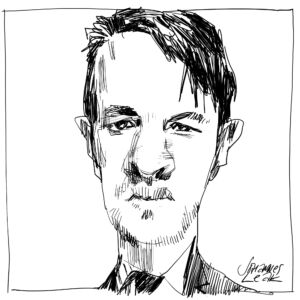Copper cams: the end of objective investigation?
Plans to attach cameras to police officers reflect the police's lack of trust in themselves.

Last week, fans of the TV show Police Camera Action!, in which British police forces are filmed bursting out of their cars like Starsky and Hutch to apprehend drunk 16-year-olds, had cause to thank Sir Bernard Hogan-Howe, the Metropolitan Police commissioner. He revealed a plan to pilot the use of cameras, fixed to police uniforms, which will be switched on when officers attend incidents. As part of the trial, 500 devices are to be distributed to 10 London boroughs. Hogan-Howe hopes this new plan will ‘improve public trust’ in the police.
What is truly odd about Howe’s announcement is that there is no evidence that the public distrust the police, even at a time when they have been known to behave in untrustworthy ways. A recent ComRes poll suggested that 82 per cent of Britons believe what police officers say when they see them speak on television. Moreover, 67 per cent of respondents to the same poll indicated that the Plebgate scandal, in which police officers were found to have manipulated evidence about government chief whip Andrew Mitchell, had ‘no impact’ on their trust in the police. Given that this poll followed the killing of Mark Duggan, in circumstances many thought suspicious, as well as the 2011 London riots, in which the police response was widely seen as feeble and disastrous, public trust in the police seems to be incredibly resilient.
What the introduction of these cameras really illustrates is the collapse of the police’s trust in themselves. They no longer seem to have any faith in their ability to investigate crime properly, particularly when it comes to investigating offences they have been criticised for screwing up in the past, such as allegations of domestic violence. Speaking to a London radio station, Hogan-Howe said that the cameras would be particularly useful when officers attended alleged scenes of domestic violence because they would ‘capture the emotion of a particular incident’ which ‘could not be captured on paper’. An example he gave was of a ‘crying child’.
Hogan-Howe’s statement really gets to the heart of the police’s internal crisis. After all, why bother doing the difficult work of an objective investigation when PC Plod can roll up and switch his camera on, like an animated investigatory tripod, and use footage of a crying five-year-old as conclusive evidence that something nasty has happened? The idea that Hogan-Howe would cite the presence of a crying child as any kind of ‘evidence’ demonstrates that, for the Met’s leadership, ‘evidence’ is not about what happened at all, but about how people ‘feel’ after an alleged crime has taken place. For them, the objective fact of what has taken place is one and the same as the emotional reactions of those involved.
This degradation of the idea of investigative objectivity is forcing police officers to go beyond their purported role as investigators and become active participants in the conflicts they are seeking to resolve. The use of these cameras in police investigations, as Hogan-Howe has laid out, would require police officers to project a clear narrative on to the incidents they attend, and then adapt their approach accordingly. For instance, the cameras could be ‘switched off if the victim asked them to be’, according to Hogan-Howe. Therefore, the police will be required to establish who the ‘victim’ is, and then defer to them in terms of how the investigation should be carried out. Of course, judging who the victim is in any particular case will sometimes be clear cut, but in the majority of cases it is a complex and nuanced process, based on the careful consideration of evidence. The idea that police officers should select and then defer to a ‘victim’ from the moment they arrive on the scene shows that objectivity and judgement have taken second place to preconceived official narratives about particular kinds of cases.
Putting cameras on coppers only shows that the dividing line between objectively investigating an offence and telling a particular story about it is becoming blurred. Senior officers appear to have become so enamoured with their own ideas about certain offences, particularly those involving domestic violence, that they imagine a police officer showing up at a crime scene with a camera on their lapel will be sufficient to establish what may have actually happened. This has little to do with public trust, or police accountability; but it does say a lot about the police’s lack of faith in themselves to be objective and reasoned in their approach to investigating crime.
Luke Gittos is law editor at spiked, a solicitor practicing criminal law and convenor of the London Legal Salon.
To enquire about republishing spiked’s content, a right to reply or to request a correction, please contact the managing editor, Viv Regan.









Comments
Want to join the conversation?
Only spiked supporters and patrons, who donate regularly to us, can comment on our articles.